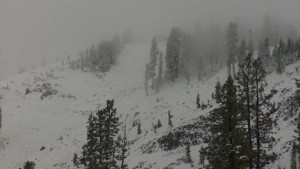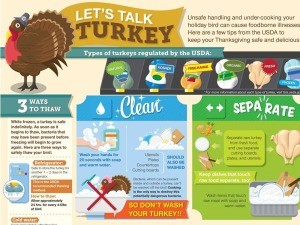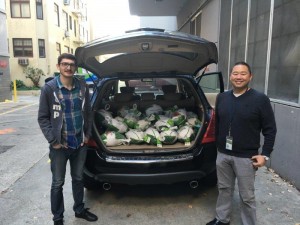By Alex Karolyi, Sustainable Conservation
 Sand County Foundation, the California Farm Bureau Federation and Sustainable Conservation are proud to announce Lone Star Ranch as the recipient of the prestigious 2016 California Leopold Conservation Award®. The award honors private landowner achievement in the voluntary stewardship of natural resources.
Sand County Foundation, the California Farm Bureau Federation and Sustainable Conservation are proud to announce Lone Star Ranch as the recipient of the prestigious 2016 California Leopold Conservation Award®. The award honors private landowner achievement in the voluntary stewardship of natural resources.
Lone Star Ranch is owned by Mark and Dina Moore. Mark is a fifth-generation rancher and was raised on the family ranch established in 1896. Located near Eureka, the ranch is approximately 5,000 acres of rangelands, oak woodlands and conifer forests. The Moore’s strongly believe in voluntary conservation practices, often exceeding the minimum regulatory obligations to improve and sustain natural resources, wildlife and ecosystems for future generations.
Dina leads a local watershed group, the Yager/Van Duzen Environmental Stewards (YES) with her ranching neighbors. The group worked collaboratively with the U.S. Environmental Protection Agency (EPA) during development of sediment-reduction standards for the Van Duzen River, allowing the EPA to conduct assessments on the watershed’s 80,000 acres of privately owned ranches. Dina worked with the EPA to conduct anecdotal historical studies and outreach that helped the EPA determine that road-related erosion, not cattle grazing, was the largest source of sediment. Over 15 years, the Moore’s and other YES families have made sediment-reduction improvements on more than 400 miles of ranch roads, reducing enough sediment to fill more than 16,000 dump trucks.
Lone Star Ranch also voluntarily acquired a Non-Industrial Timber Management plan through Cal Fire, which provides regulatory assurances to the landowner in exchange for ensuring that timber is harvested in a sustainable manner. The Moore’s plant approximately five trees for every one harvested – ranging from 3,000 to 5,000 new plantings each winter. They also conduct an annual survey of northern spotted owls and provide setbacks of harvesting timber around streams for the protection of Coho Salmon. Their latest project will restore approximately 150 acres of native black and white oak in partnership with the U.S. Fish and Wildlife Service.
Given in honor of renowned conservationist Aldo Leopold, the Leopold Conservation Award recognizes extraordinary achievement in voluntary conservation. In his influential 1949 book, A Sand County Almanac, Leopold called for an ethical relationship between people and the land they own and manage, which he called “an evolutionary possibility and an ecological necessity.”
“Many Californians don’t realize, but when they look out across the landscapes where they live and travel, more than half of that land is in private ownership,” said Ashley Boren, Executive Director of Sustainable Conservation, which has co-sponsored the award since its inception in California. “And, how those individuals and families manage their properties has a dramatic effect on the health of the state’s natural resources and communities. That’s why we’re thrilled to celebrate the decades-long efforts of the Moore’s. They’ve not only worked tirelessly to steward their own range and timberlands in ways that enhance the important landscapes, water and wildlife under their care. But, they’ve shown relentless commitment in inspiring other landowners to do the same across a vast 80,000 acres.”
“Farmers and ranchers are constantly confronted with changing dynamics that effect their bottom-lines,” says Paul Wenger, President of the California Farm Bureau. Volatile markets and unexpected weather often conspire to challenge the profitability of farmers and ranchers. Protecting and enhancing the natural resources on our agricultural lands is an extremely important endeavor as we in agriculture strive to be the best stewards of our farms and ranches. We are honored to help recognize the extraordinary accomplishments of farmers and ranchers who go the extra mile in managing the natural resources on their farms and ranches. Aldo Leopold recognized that good stewardship required farmers to develop practical and economically feasible solutions in order to be effective stewards of their farms. The Leopold Conservation Award recognizes those individuals who are setting such an example for others to emulate and follow.”
The 2016 California Leopold Conservation Award will be presented December 5 at the California Farm Bureau Federation’s Annual Meeting in Monterey, CA. Each finalist will be recognized at the event, and the Moore’s will receive a crystal depicting Aldo Leopold and $10,000.
The award sponsors also wish to congratulate the 2016 finalists for their outstanding contributions to agriculture and conservation:
Ken and Matt Altman own and manage Altman Specialty Plants in Riverside and San Diego counties. Begun as a hobby, their greenhouse company grows 3,000 plant varieties. The nurseries utilize energy and water-efficient irrigation systems and moisture sensors that have reduced water use per acre by 50%. The Riverside County facility’s new system reuses 1 million gallons of water per day, nearly enough to fill two Olympic-sized pools. Ken and his wife, Deena, founded the Center for Applied Horticultural Research, a non-profit research and teaching center dedicated to the advancement of a sustainable horticulture industry.
C. Jeff Thomson is a fifth-generation famer near Bakersfield (Kern Co.) who grows a variety of annual vegetable crops, including watermelons, onions, potatoes and carrots. Thomson perfected a suite of notable conservation approaches to better steward the soil, water and wildlife both on and off his land. His use of drip irrigation and soil sensors has reduced water use on a number of his crops by up to 60%. To benefit a variety of waterfowl, including imperiled species, Thomson established an 850-acre wetland with help from colleagues and in partnership with the U.S. Fish and Wildlife Service and California Department of Fish and Wildlife.
The California Leopold Conservation Award is made possible thanks to generous contributions from American AgCredit, Farm Credit West, The Harvey L. & Maud S. Sorenson Foundation, The Nature Conservancy and Environmental Defense Fund.
ABOUT THE LEOPOLD CONSERVATION AWARD® The Leopold Conservation Award is a competitive award that recognizes landowner achievement in voluntary conservation. The award consists of $10,000 and a crystal depicting Aldo Leopold. Sand County Foundation presents Leopold Conservation Awards in California, Colorado, Kansas, Kentucky, Nebraska, North Dakota, South Dakota, Texas, Utah, Wisconsin and Wyoming. For more information, visit www.leopoldconservationaward.org.
ABOUT SAND COUNTY FOUNDATION Sand County Foundation is a non-profit conservation organization dedicated to working with private landowners across North America to advance ethical and scientifically sound land management practices that benefit the environment.www.sandcountyfoundation.org
ABOUT SUSTAINABLE CONSERVATION Sustainable Conservation helps California thrive by uniting people to solve the toughest challenges facing our land, air and water. Since 1993, it has brought together business, landowners and government to steward the resources that we all depend on in ways that make economic sense. Sustainable Conservation believes common ground is California’s most important resource.www.suscon.org
ABOUT CALIFORNIA FARM BUREAU FEDERATION The California Farm Bureau Federation works to protect family farms and ranches on behalf of over 53,000 members statewide and as part of a nationwide network of more than 6.2 million Farm Bureau members. www.cfbf.com












